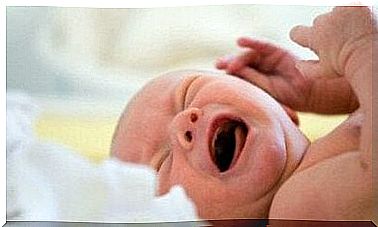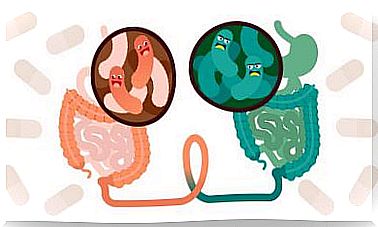3 Fascinating Facts About The Fats In Breast Milk

The fats in breast milk have functions in addition to just being food. Milk is a living substance in constant change and as such its composition is not uniform. Incredibly, its components vary during the day and between different feeds. The composition also changes gradually depending on the age of the child.
Although the mother’s diet is not a decisive factor for these changes, certain nutrients can be affected by her food intake. The composition of a mother’s milk is usually specifically tailored to her baby’s developmental needs. This applies to every growth phase, including premature babies.
The energy in breast milk comes mainly from two components. The first, lactose, is the component that makes up the bulk of milk. The second component is the fats found in breast milk.
Something that is interesting is that in addition to milk fat, our body also transfers fat-soluble molecules. For example, vitamins A, D, E and K and other carotenoids. Today we are going to talk about three interesting facts about the fats in breast milk.

1. The fats in breast milk are distributed in an emulsion
Milk is an emulsion with fat particles, distributed in something called fat globules, in an aqueous liquid (whey). The cells in the mammary epithelium produce these fat globules. They are available in different sizes, with diameters from 0.1 to 10 micrometers.
They contain substances that are characteristic of the mammary epithelial cells. Researchers have discovered that these have a high proportion of triglycerides. But their main characteristic is that they are covered by a unique, structured membrane.
Why is this membrane so important?
It is very interesting to know that this membrane has three layers of phospholipids, when membranes in the rest of the body only have two. Thanks to this unique structure in the membrane, the fat globules do not bind to each other and the fat particles remain separated in the aqueous substance.
In addition, the structure and composition of the membrane allow it to transport metabolically important lipids, such as sphingomyelin and gangliosides. At the same time, it is a source of many other bioactive compounds, including glycolipids, glycoproteins and carbohydrates, which have important functions in the brain, intestines and immune system.
2. Fat globules in breast milk affect the development of intelligence
The membrane lipid components in the fat cell, such as sphingomyelin and gangliosides, are present in high concentration in the brain. Experts have discovered that they help to form connections (synapses) between neurons and also to create myelin.
Myelin is important because it has an insulating ability, which results in a more efficient transmission of nerve impulses. Myelination is a process that accounts for a large part of brain growth during the latter part of pregnancy and the first two years of life. But this process can continue until a child is 5, or even up to 10 years old.
Researchers have conducted several clinical studies on children, ranging from premature babies to preschoolers. They showed that dietary supplements with membranes from milk fats improve children’s cognitive processes and behaviors.
3. The fats in breast milk strengthen the immune system and promote intestinal health
Studies in animals have shown that gangliosides strengthen the immune system. In addition, other components transported with fat globules also affect the immune response. Such components include various proteins, such as lactadherin, mucin-1 and butyrophilin.
Each of these components affects the immune system through several different processes. For example, they can interfere with the adhesion of pathogenic microbes to the intestinal epithelium. Others have a bactericidal effect and can even help develop the intestinal microbiota.
We hope this article has shown you the amazing properties of breast milk and how it affects a baby’s growth in many different ways!









